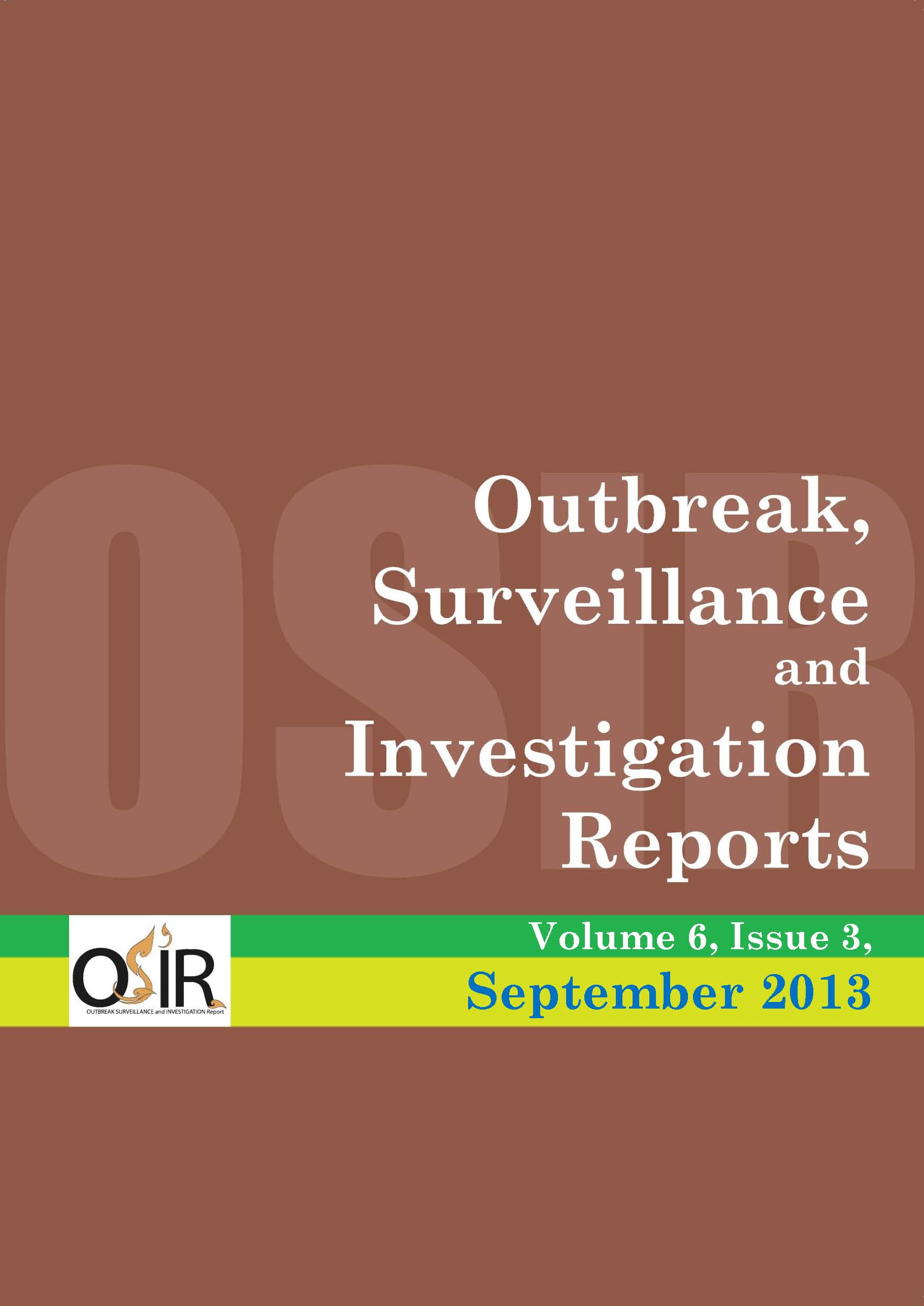The Proficiency Level of Microscopists Detecting Mycobacterium tuberculosis at Government Health Clinics in Three Selected States of Malaysia, 2009-2010
DOI:
https://doi.org/10.59096/osir.v6i3.263329Keywords:
proficiency testing, Mycobacterium tuberculosis, Kappa agreement, microscopistAbstract
Sputum smear microscopy is the cornerstone of diagnosing infectious tuberculosis. The presence of microscopic errors may misclassify or misdiagnose cases as non-cases, or vice versa. Substandard performance will compromise the efforts to detect tuberculosis and complicate measures to control. This study aimed to determine the proficiency of microscopists at three selected government health clinics in Malaysia. A cross-sectional study was conducted in 2009-2010. Three states were selected based on their high sputum positivity rate. All microscopists were enrolled and instructed to stain and grade a set of seven predetermined densities of mycobacilli slides. Two independent raters assessed their readings. A total of 100 microscopists and 700 slides were tested. 88.2% of slides were in agreement, with sensitivity of 83.8%, specificity of 94.3%, positive predictive value of 95.2% and false negativity rate of 18.7%. From the low positive slides, 27.5% were graded as negative. Two-third of microscopists achieved the accepted grading proficiency and 37% were scored as good staining. There was a need to intensify training on smear microscopy if the gateway for diagnosing TB in Malaysia was smear microscopy.
References
Ridderhof JC, van Deun A, Kam KM, Narayanan PR, Aziz MA. Roles of laboratories and laboratory systems in effective tuberculosis programmes. Bull World Health Organ. 2007 May;85(5):354-9. [cited 2013 Jan 3]. <http://www.who.int/bulletin/volumes/85/5/06-039081/en/>
Standard operating procedure for laboratory diagnosis of tuberculosis and M. Avian complex diseases in HIV positive patients. In: Kumari S, editor. Guidelines on standard operating procedures for laboratory diagnosis of HIV-Opportunistic infections. New Delhi: World Health Organization; 2001 Jun. p.11-26. [cited 2013 Jan 3]. <http://apps.searo.who.int/pds_docs/B0189.pdf>
World Health Organization. Laboratory services in tuberculosis control part II: microscopy. 1998. [cited 2013 Jan 3]. <http://whqlibdoc.who.int/hq/1998/WHO_TB_98.258_(part2).pdf>
Dawson D, Kim SJ, World Health Organization Regional Office for the Western Pacific. Quality assurance of sputum microscopy in DOTS programmes - guidelines for Pacific Island Countries. Manila: World Health Organization; 2003. [cited 2013 Jan 3]. <http://www.wpro.who.int/publications/docs/Quality_assurance_for_sputum_PIC.pdf>
Ridderhof J, Humes R, Boulahbal F. External quality assessment for AFB smear microscopy. APHL, CDC, IUATLD, KNCV, RIT, WHO. 2002. [cited 2013 Jan 3].
Smithwick RW, Stratigos CB. Preparation of acid-fast microscopy smears for proficiency testing and quality control. J Clin Microbiol. 1978 Jul;8(1):110-1.
Luelmo F. What is the role of sputum microscopy in patients attending health facilities? In: Frieden T, editor. Toman's tuberculosis: case detection, treatment, and monitoring - questions and answers. 2nd ed. Geneva: World Health Organization; 2004. pp. 7-13.
Selvakumar N, Kumaraswami, V, Gopi PG, Sivagamasundari S, Prabhakaran E, Vasanthan S, et al. Proficiency to read sputum AFB smears by senior tuberculosis laboratory supervisors under training at a reference laboratory in India. Indian J Tuber. 2005;52:11-4.
World Health Organization. Fact sheet on tuberculosis. March 2006. [cited 2013 Jan 3]. <http://www.who.int/mediacentre/factsheets/fs104/en/>
World Health Organization. Laboratory services in tuberculosis control part 1; organization and management. 1998. [cited 2013 Jan 3]. <http://whqlibdoc.who.int/hq/1998/WHO_TB_98.258_(part1).pdf>
Rawlinson J, Mogale J. Implementing proficiency testing for TB smear microscopy in the northern province, South Africa. Durban: Health Systems Trust; 2001.
Downloads
Published
How to Cite
Issue
Section
License
Copyright (c) 2023 Outbreak, Surveillance, Investigation & Response (OSIR) Journal

This work is licensed under a Creative Commons Attribution-NonCommercial-NoDerivatives 4.0 International License.









